How to Choose a Train Type and Seat Class
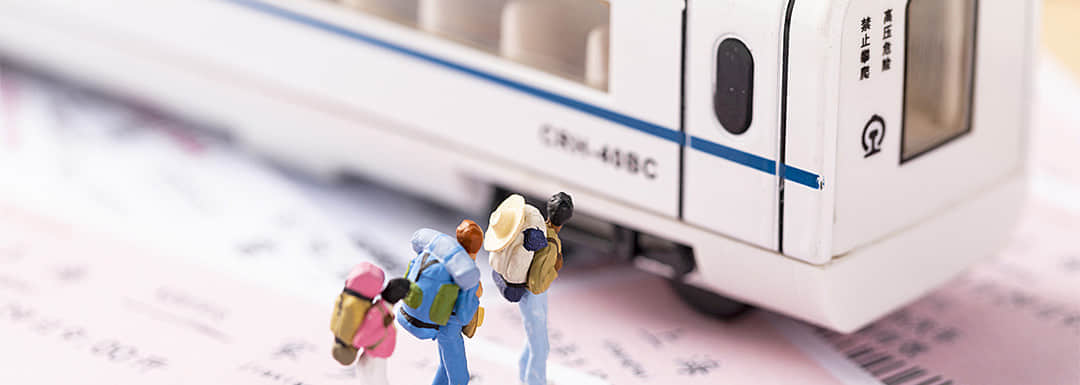
China has the world's largest and most advanced railway system. Choose your destination, buy a ticket and start your journey. This sounds like a very simple thing, but you may be confused by the variety of tickets. So check out this page – we'll help you choose the one that works best for you.
Type of Chinese Train
The names of Chinese trains are usually a combination of capital letters and numbers, with the initial capital letter representing the type of train. Depending on the speed, trains can be divided into two categories: high-speed trains and ordinary ones. Here is a list of the six most common types of trains that cover almost every possible choice you can make on your trip:
| Type | Top Speed | Feature | Ticket Types |
| High-Speed Trains (recommended) | |||
| G | 350 km/h (217 mph) | Fastest and best of all | Business/ first/ second class |
| D | 250 km/h (155 mph) | The most common | Business/ first/ second/ soft sleeper/ deluxe soft sleeper |
| C | 200 km/h (124 mph ) | Run between large neighbored cities | Business/ first/ second class |
| Ordinary Trains | |||
| Z | 160 km/h (99 mph) | Non-stop express trains | Deluxe soft sleeper/ Soft sleeper/ Hard Sleeper/ Hard seat |
| T | 140 km/h (87 mph) | Express trains with stops at main stations | Soft sleeper/ Hard Sleeper/ Hard seat |
| K | 120 km/h (75 mph) | Fast trains with lots of stops | Soft sleeper/ Hard Sleeper/ Hard seat |
| Without capital letter, only 4 digits | 100 km/h (62 mph) | Slowest trains, only run between small cities and remote areas | Soft sleeper/ Hard Sleeper/ Hard seat |
- When choosing trains, there is no obvious difference between the three types of G, D and C in high-speed rail. They are all fast and comfortable choices. However, G and C are usually faster than D.
- When choosing the ordinary train, try to choose the train starting with Z if possible, which is a direct train between destinations and is equipped with air conditioning.
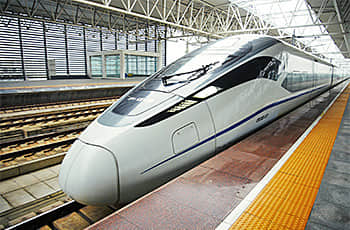
High-Speed Train
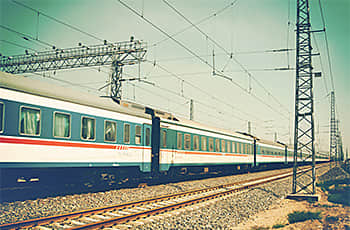
Express Train
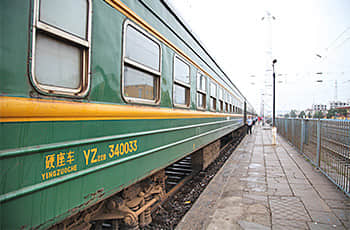
Slowest Train
What's more:
- CRH and CR, the two main types of high-speed trains in China
- Shanghai maglev train is the world's first maglev commercial transport line jointly developed by China and Germany
- At 350 kilometers per hour, the Beijing-Shanghai high-speed railway has the world's highest operating speed and has become the world's latest high-speed railway with the longest line and highest standard.
High-Speed Train
Fast, comfortable and safe, high-speed trains are the most popular choice among travelers. China has an advanced high-speed railway network that allows you to get to almost any popular destination you want with a more affordable fare than airplanes. High-speed rail stations are usually closer to the city center than airports.

About the Seat
High-speed trains have 4 classes of seat – second class, first class, VIP class and business class. The second class is basic and business class is the best. The most popular of these seat types are the first and second class seats, which are available in all models and are economical. Ticket prices on China's high-speed trains are based on the length of the journey, and the price difference between higher-class seats and lower-class seats on short trips is not large.
Second Class
Second Class is the most popular choice, with the most affordable price. The seat carriage has five chairs in a row – two on one side of the aisle and three on the other. The seat materials are slightly elastic and basically comfortable. It is highly recommended for a short train tour that is less than 4 hours.
There is room for small pieces of luggage in the overhead bins and under the seats. Large luggage can be put on the rack at the end of the carriage. Assistance devices are placed around the seat, such as a folding tray table, seat back adjustment, book grid, spare bag, and charging port.
Tips:As the most commonly chosen seat type, you may find the cabins are very crowded and noisy, especially during Chinese holiday seasons.
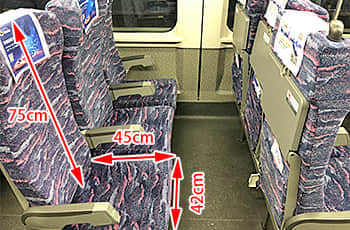
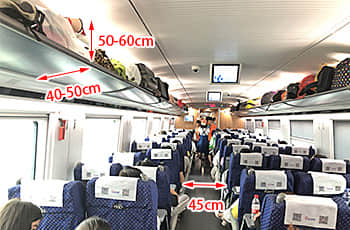
First Class
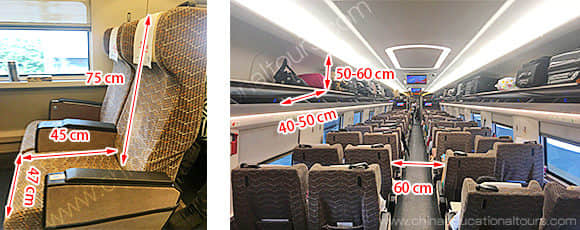
First class is an upgraded version of second class, with more comfortable seats, wider personal space and less crowded carriages. The seat carriage has four seats in each row, two on each side. The seat can be reclined at a greater angle than the second class seats, making it more comfortable to lie down. The toilets in the first class carriage are spacious and bright, and have toilets for the disabled.
Many people agree first class seats on the High Speed trains are more comfortable than economy class in an airplane. First class seats cost about a third more than second class seats. On some busy routes, a first-class seat is a good choice, allowing you to avoid the noise and have a more comfortable journey.
VIP Class
This is available on a few D and G trains, and offers greater comfort, wider personal space and a more private journey experience. There are three seats in each row, two on one side and one on another. Usually, the VIP seats are located at the front and rear of the train, so they are also called "sightseeing areas" where passengers can enjoy the scenery from the driver's perspective. Meanwhile, the VIP seats occupants also enjoy free snacks and drinks.
Business Class
The business class seat is the highest seat class on the high-speed train. It is designed to provide the best facilities and service for passengers. The comfortable egg-shaped seats can be adjusted at any angle and can be laid flat like a bed at 180°. There are only two seats in the row of business class, one on each side, next to the windows.
Every seat in the business class is equipped with a separate flat-screen TV, reading light, charging socket, and call bell. Disposable slippers and magazines located on the side of the seat, and all kinds of drinks and snacks are provided freely. Luxury treats! The business class carriages are also equipped with a bar and separate lavatory. VIP lounge and privilege access is available.
The high standard of enjoyment is certainly matched by its price, so the ticket price of a business seat is usually three times more than a second class seat.
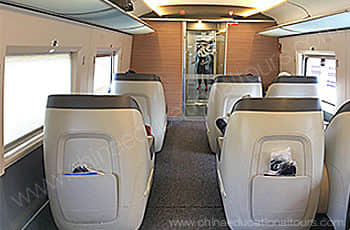
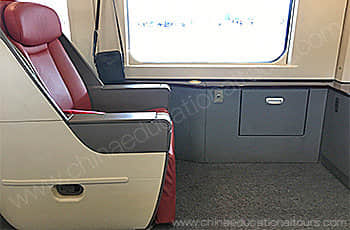
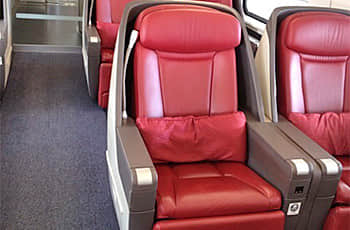
Soft Sleeper
Each sleeper carriage has 10 compartments, each compartment has 4 beds, and a sliding door separates the compartment from the corridor. The sleeper car has a larger trunk than the seat carriages, the bed is wider than the sleeper in normal trains, and provides a more comfortable travel experience. A constant temperature of 24°-26° is maintained in the compartment. The air volume of the air conditioner can be adjusted separately in each sleeper compartment. There is a communal hot water kettle, and each berth is equipped with disposable slippers, LCD screens, reading lights and headphones. If you need to take a long train journey (more than five hours) and especially if you need to stay overnight, a sleeper is the best choice.
Lavatory
- The lavatory is usually located at the junction of the two carriages. It is important to note that all high-speed trains are smoke-free, and smoking can trigger smoke alarms on trains and cause emergency stops, including in the restrooms.
- Most trains have Chinese toilets only.
- Toilet tissue may be used up and not replenished in lavatory, it is recommended to carry your own (which is always a good idea when traveling in China).
Dining
- The dining carriage is usually located in the middle of the train. There are also trolleys circulating to sell packed meals and snacks.
- Snacks, beverages and local specialties are available for sale by trolleys occasionally.
- Meals on the train are usually more expensive than in the city and you can bring your own food. It's recommended to bring something with less smell if you don't want to be stared at.
- Hot water is provided on the high-speed train.
Ordinary Trains
In China, ordinary trains are defined as trains traveling at a speed under 160 km/h. With their low fares (about half of high-speed train's second class) and big capacity, these trains are widely popular too. One notable feature of these trains is their military green shells, so that the Chinese like to call them "Green Trains". The interior of an ordinary train is mostly practical with low comfort, but it can carry a lot of passengers and goods. Ordinary trains have more stops than high-speed trains, and can reach areas and small towns without high-speed rail. If you prefer a slower pace, wanting to enjoy the scenery along the way, and are less concerned about speed and comfort, this would be the right choice. You can even spend the night on the train.
*Read more about taking overnight trains in China

About the Seat
Hard Seat (not recommended)
The hard seat carriage has five seats in each row; two seats and three seats are separated by an aisle. But the seats in every two adjacent rows face each other and two tray tables place below the windows of each side. The hard seat carriages also sell "Standing" tickets, so at peak times the carriages are cluttered with people, poor hygiene, undesirable environment and less comfort. You may meet people who eat pungent noodles, talk loudly, and smoke or have body odor. Be prepared mentally and physically, and take something to kill time.
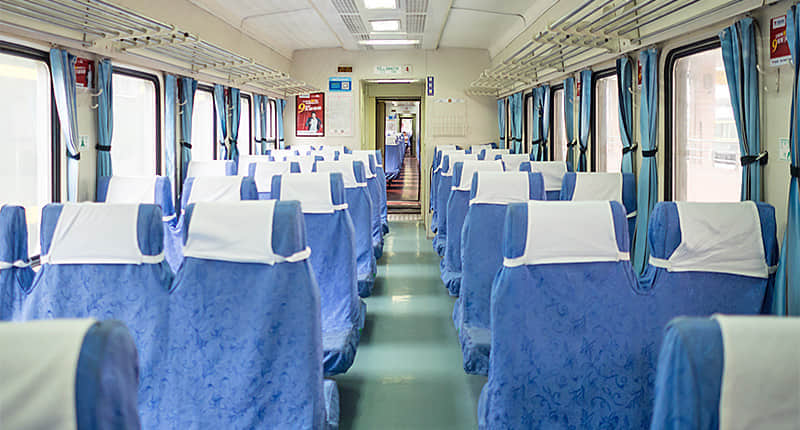
Soft Seat
In a soft seat carriage, the train seats have armrests and a back that automatically adjusts. The soft seats are more comfortable than the hard seats with 2+2 layout – four seats in each row, two on each side. Soft seat cars only allow people with the corresponding ticket of the seats to enter, avoiding the noise and chaos of hard seats. If you want to experience Ordinary Trains, soft seats are recommended.
Tips: Smoking is not allowed in the soft seat carriage. There is a smoking area at the junction between carriages.
Hard Sleeper
This is the cheapest type of sleeper, low comfort, and not recommended to try. There are 6 bunks in each compartment, each carriage has 11 compartments, and no door separates the compartment from the corridor. Each bed is only 60 centimeters wide, the aisles are narrow, and it is difficult to sit on beds in the middle and top bunk. In fact, if you are the lucky person with the bottom bunk, everyone else comes and sits on your bunk when they are not sleeping.
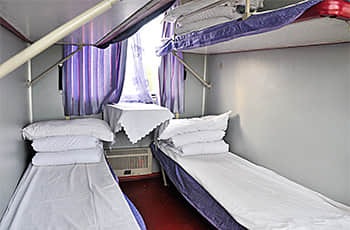
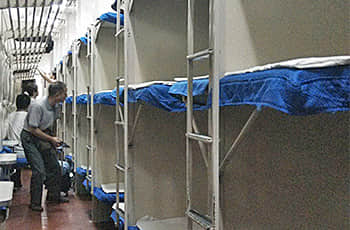
Soft Sleeper
The soft sleeper costs about twice as much as the hard sleeper. The upper bunk is slightly cheaper, but they both have enough space to sit up in. Each sleeper carriage has 9 compartments, each compartment has 4 beds, and a sliding door separates the compartment from the corridor. You will have more security and privacy than in a hard sleeper carriage. Soft sleeper is recommended for any long-haul overnight train journey.
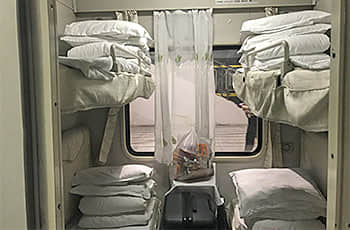
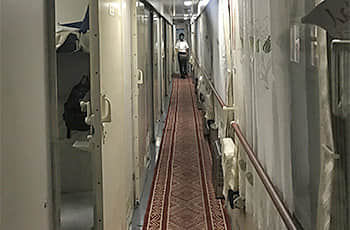
Deluxe Soft Sleeper
This is the most comfortable option on the ordinary train, which only offers luxurious sleeping berths on a few train routes, including some special tourist trains, which have different comfort and service from the ordinary train, as well as high ticket prices. Typically, each compartment in a luxury soft sleeper has only two beds and sofas. It is a perfect choice for honeymoon travel or family travel.
Lavatory
- The lavatory is usually located at the junction between carriages.
- There is a smoking area at the junction between carriages.
- Most trains have Chinese toilets only.
- Train toilet paper is often used up and not replenished in lavatory, it is recommended to carry your own toilet paper (which is a good idea anywhere in China).
Dining
- The Dining carriage is usually located in the middle of the train. There are also trolleys circulating to sell packed meals and snacks.
- You may be approached by an attendant to promote local specialties.
- Meals on the train are usually more expensive than in the city and you can bring your own food. It's recommended to bring something with less smell if you don't want to be stared at.
- Hot water is provided.
Luggage Policy
1. You need take care of your luggage by yourself.
2. The free luggage weight and volume:
- Children (including free-ticket children):10 kg
- Diplomatic staff: 35 kg
- Other passengers: 20 kg
- The sum of length, width and height must be less than 1.6 meters.
- Any rod-shaped article must be no more than 130 cm, and less than 20 kilograms.
3. Folding wheelchairs, which are free to carry, are not included in the above range.

OR
Are you eager to begin your Chinese cultural journey?
Drop us a line and we will promptly connect you with our leading China expert!

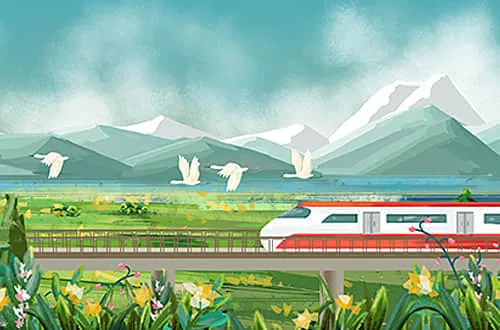 High Speed Train from Ancient to Modern China
High Speed Train from Ancient to Modern China 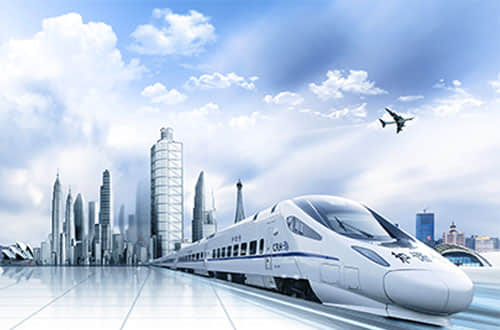 China Railway Pilgrimage
China Railway Pilgrimage 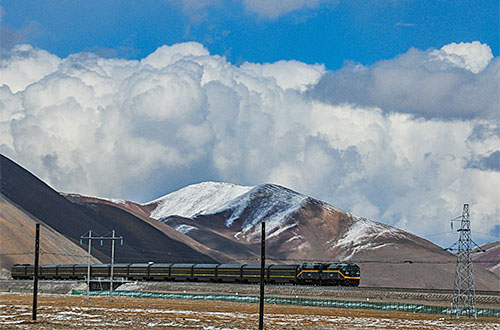 Travel into Tibet through the World's Highest Railway
Travel into Tibet through the World's Highest Railway 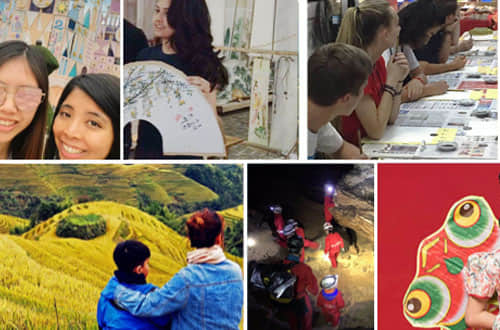 Top Family Vacation Destinations
Top Family Vacation Destinations